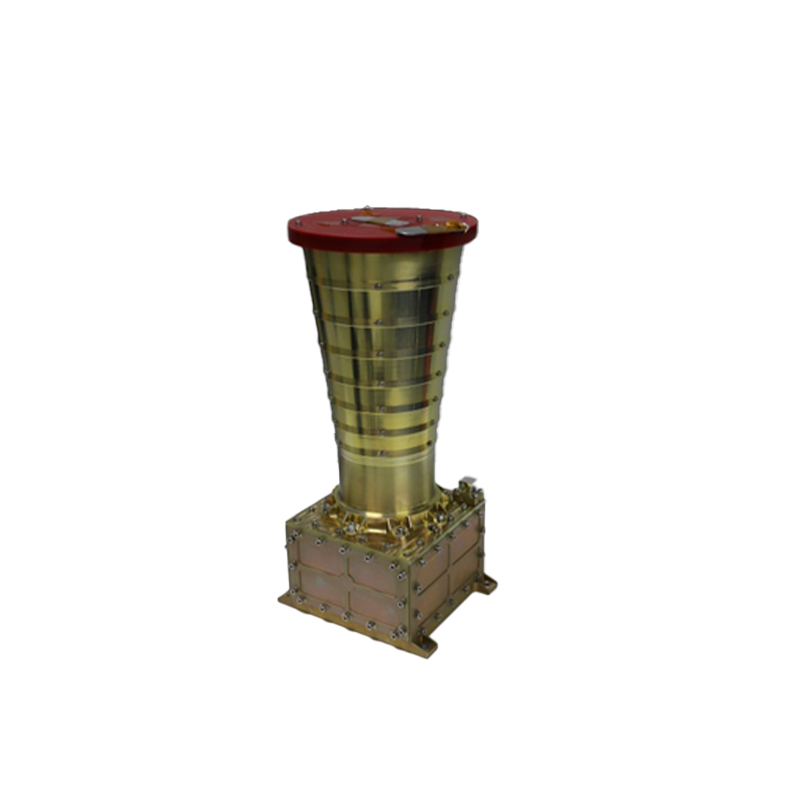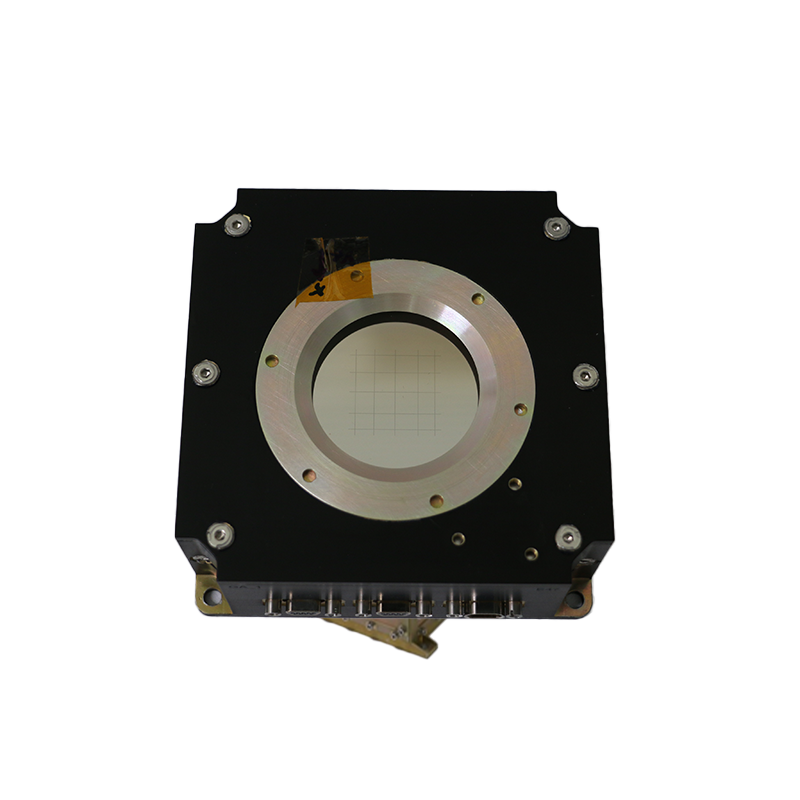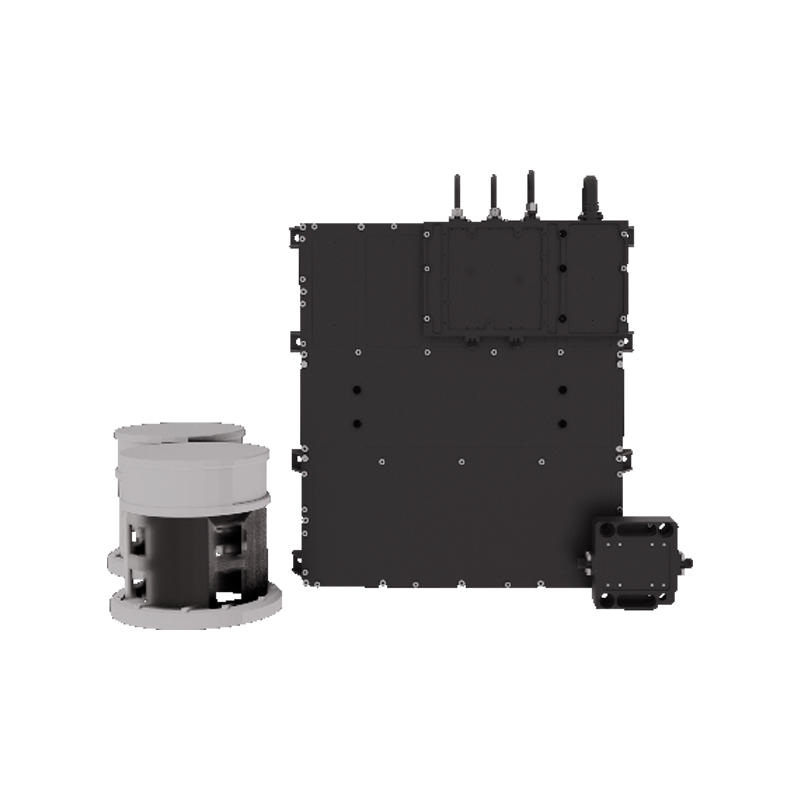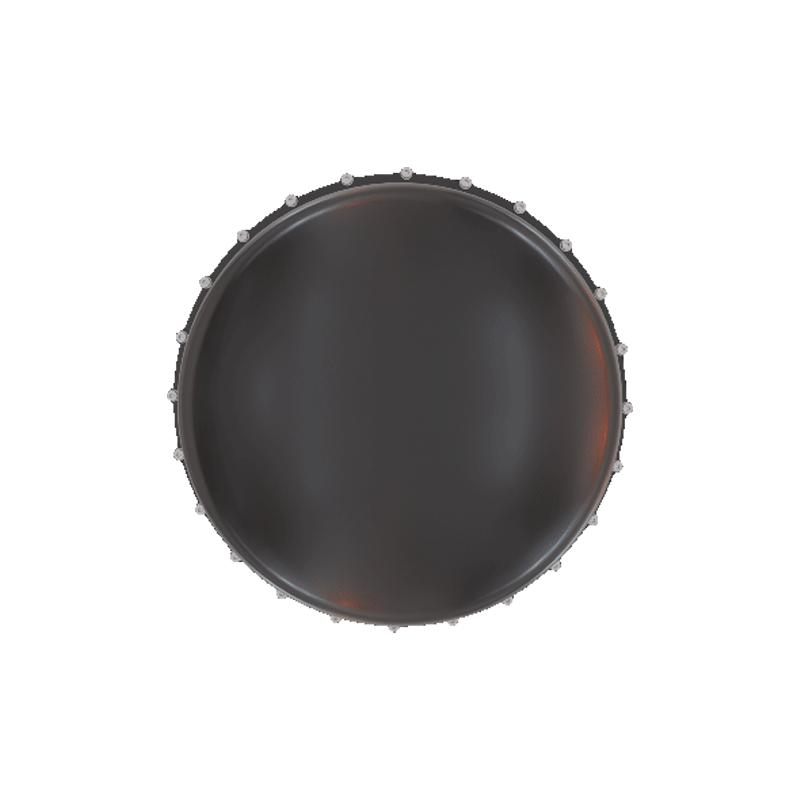UZAY
Attitude Determination and Control Subsystem
Star Tracker
The Star Tracker is a robust and modular opto-electronic sensor compatible with different space orbits. Thanks to it's modular structure, it satisfies attitude determination needs of different Attittude and Orbit Control Systems (AOCS).

Star Tracker Features
Key Features
- 1 electronic unit can be connected to up to 3 optical units via the fast SpaceWire interface
- HAS-2 CMOS APS sensor with thermo-electric cooler (TEC)
- Electronic unit embedded software capable of processing multi-optical unit data
- Electronic unit embedded software with autonomous orientation acquisition, tracking algorithms and star catalog
- Delivery of the fused attitude quaternion to the flight computer
Optical Unit Features
Spherical lenses, rad-hard glass material
70 mm focal length, f/1.4
15 x 15 degree field of view
Light curtain protecting the sensor from unwanted light (from the Sun and Earth)
Radiation tolerant APS CMOS HAS-2 sensor, 1.024 x 1.024 sensor resolution
Optical Unit Budgets
Supply: Power supply is provided through the electronic unit.
Power Power supply is provided through the electronic unit.
Size: 159 mm x 130 mm x 343mm (W x L x H)
Weight: 3 kg
Electronic Unit Features
Dual Core, High Reliable LEON3FT Based Microprocessor
RTEMS Real Time Operating System
CCSDS and ESCC Compatible TM-TC
Bootloader, Drivers and Board Support Packages, Star Tracker Software
8 MB SRAM, 256 MB SDRAM, 2 MB PROM (All ECC protected)
Electronic Unit Budgets
Supply: 28V nominal (16V - 40V Input voltage range)
Power: 20W (nominal)
Dimensions: 308 mm x 279 mm x 148 mm (W x L x H)
Mass: 7.3 kg
Optical Unit Interfaces
3 x 2 SpaceWire
3 x 2 Power and Time Synchronization Interface (RS-422)
Electronic Unit Interfaces
Bus: 2 x 2 CAN
2 x 1 JTAG
Synchronization : 2 x 2 PPS Input (RS-422)
Power Interface : 2 x 2 Main Power Input
Heritage / Platforms
IMECE, TURKSAT 6A
Environments / Reliability
Thermal:-20 to +50 C
Vibration
Shock
EMI/EMC: MIL-STD-461
Lifetime: 5 to 15 years
SEU tolerant
Latchup Immune
Sun Sensor
The Sun Sensor is an instrument to detect the position of the Sun to be used for attitude control in satellites. They are especially important during the launch and early orbit phase, emergency cases and in case attitude determination sensors like star trackers does not operate correctly.
The Sun Sensors make use of various analog or digital detectors to indicate the Sun angle vector typically with low accuracy. Our domestically developed the Sun Sensor is a fully digital, high-performant, high accuracy instrument that is tolerant to harsh environmental conditions.

Sun Sensor Features
Key Features
- FPGA-based and radiation-resistant electronic processing unit
- High resolution radiation tolerant CMOS detector
- ±64° field of view in two axes
- High precision Sun vector estimation with 0.1º angular resolution
- In-house developed optical design and digital algorithm using expanded grid
- 5 Hz output frequency
- Domestically produced optics (OPMER)
Reliability and Fault Detection, Isolation and Recovery Features
Electronical processing unit with high reliability
Internal Temperature Monitoring
Internal Current and Voltage Monitoring
Redundant data bus
FDIR enabled algorithm
Budgets
Supply: 28V (IMECE), 100V (TURKSAT 6A)
Power: 3.2 W (IMECE); 3.7 W (TURKSAT 6A)
Size: 100 x 100 x 40 mm (IMECE), 124 x 106 x 42 mm (TURKSAT 6A)
Weight: 550 g (IMECE), 800 g (TURKSAT 6A)
Interface
TM-TC : 2 x CAN ISO (warm redundant)
Pin redundant power interface
Heritage / Platforms
IMECE, TURKSAT 6A
Environments / Reliability
Thermal:-20 to +50 C
EMI/EMC: MIL-STD-461
Lifetime: 5 to 15 years
SEU tolerant
Latchup Immune
Global Positioning System

GPS Features
| Parameter | Value |
|---|---|
| Position Accuracy (m, % 90 SEP) | < 10 |
| Speed Accuracy (m/sec, % 90 SEP) | < 0,01 |
| Time Accuracy (nsec) | < 500 |
| PVT Solution Algorithms | Least Squares, Kalman Filter (Main) |
| Full Convergence After Cold Start | < 1.5 Orbit |
| Possible GNSS Signals |
GPS L1 C/A, L2C, L5 I/Q GALILEO E1 B/C, E5a I/Q |
| Total Channel Number | 36 |
| Measurement Data from Each Channel | Code Phase, Carrier Phase, Pseudorange, Doppler, C/N0 |
| Solution Performance Data | GDOP, Number of Satellites |
| Configuration | 2 x Antennas (Ant.) 2 x LNAs 1 x Electronic Unit (EU) |
| Effective Antenna Field of View (°) | 140 |
| Minimum Visible Satellites in LEO | 4 |
| Mass (kg) |
Antenna: 0.5 LNA: 0.1 EU: 3.8 |
| Dimensions (mm) |
Antenna < Φ 165, 70 LNA < 55 x 40 x 20 EU < 300 x 300 x100 |
| Input Voltage (V) | 28 ± 5 |
| Max. Power Consumption (W) | < 15 |
| Data Interface | MIL-STD-1553 |
| PPS Interface | RS422 |
| Other Features | An embedded radiation dosimeter is available |
Reaction Wheel
Reaction Wheels are momentum changing components, which are comprised of a high inertia rotor (flywheel) coupled to an electric motor and are used for the precision control of attitude and stabilization of satellites. Reaction Wheels must not only provide the precise attitude control but also operate almost without interruption during the satellite's lifetime. Therefore, the lifetime of the the spacecraft generally depends on the performance of the reaction wheels. Usually, four Reaction Wheels (for redundancy purposes) are required to control the spacecraft in 3-axis.
Orientation control and stability in three axes can be achieved by using multiple (usually 4, at least 3) Reaction Wheels.
The Reaction Wheel, developed by TUBİTAK UZAY, provides satisfying performance in terms of momentum storage, torque, and wheel speed measurement, as well as zero-crossing and micro-vibration features.

Reaction Wheel Specifications
The Reaction Wheel comprises two units: 1) Electrical Unit and 2) a Mechanical Unit. The main features of the Reaction Wheels are:
- Angulan momentum storage >15Nms,
- Reaction Torque > 200 mNm,
- Total mass 8.5 kg.
Projects
- İMECE : 1 Structural Thermal Qualification Model , 1 Qualification Model, 1 Flight Model
- TURKSAT 6A: 1 Structural Thermal Qualification Model, 1 Qualification Test Model, 1 Engineering Model, 1 Flight Model
- AYAP -1 Lunar Research Project: 1 Structural Thermal Qualification Model , 1 Qualification Model, 4 Flight Model
| Features | Unit | Remarks |
|---|---|---|
| Reaction Torque | 250 mNm | |
| Angular Momentum Storage | 15 Nms | @ 4000 rpm |
| Speed range | ± 4000 rpm | |
| Nominal Voltage (LEO) | 28 V | (23 -35 V) |
| Nominal Voltage (GEO) | 100 V | (95-105 V) |
| Interface | CAN | 20 Hz TM/TC interface |
| Mass | 8.5 kg | Total for Wheel Unit and Electronics Drive Unit |
| Protection Features | Overspeed, Over Current, Over/Under Voltage, Over Temperature | |
| Lifetime | 7 years (LEO), 15 years (GEO) | |
| Stand-by Power Consumption | < 10W | |
| Highest Power Consumption | < 125 W | |
| Operating Temperature | '-20 C / 50 C |

